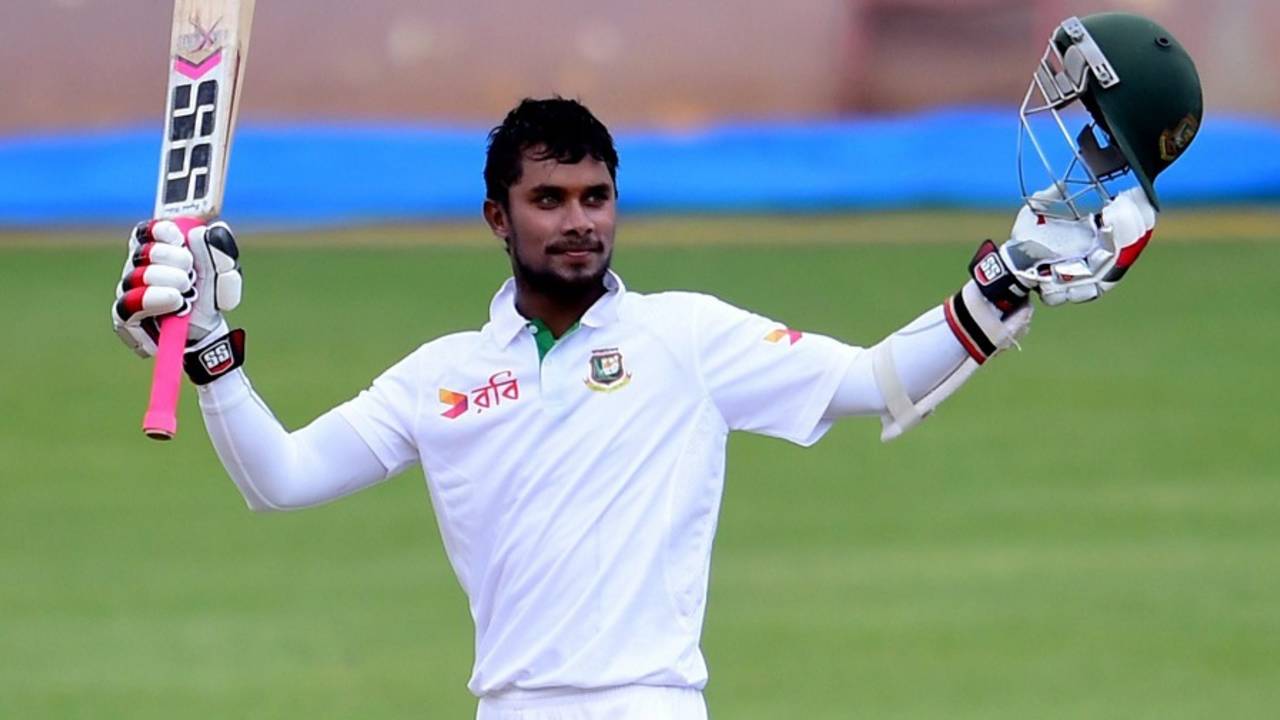In the two years that he has spent playing 55 international matches,
Sabbir Rahman has rapidly progressed from being a lower-order hitter in T20s to a dependable ODI No 3. He now has the chance to bring his free-spirited approach to batting to Bangladesh's Test team.
He is arguably Bangladesh's most exciting Test entrant since Habibul Bashar and Aftab Ahmed in the early days of their status. Both brought a sense of adventure to the line-up, though Aftab couldn't sustain playing in his own brash style for too long. Bashar was the batting mainstay from 2000 to 2007, combining his ability to play strongly off the front and back foot with the solidity of a run-maker.
Sabbir doesn't necessarily have to fill Bashar's shoes or suffer Aftab's fate but he will also be expected to bat his own way, which so far has made him a regular in Bangladesh's limited-overs teams.
"Everyone thought that I am a T20 player, that I would not be able to play one-dayers even," Sabbir said. "I proved that I can play ODIs. I am now in the Test side, so Insha'allah I am hoping for my debut. I will try to make sure that I can play in all three formats in the same way."
He is among four newcomers in the 14-man side selected for the first Test against England starting on Thursday, which also includes Mehedi Hasan, Nurul Hasan and Kamrul Islam Rabbi. The inclusion of these four talented cricketers is a welcome boost for the Bangladesh team management which is desperate to revive the Test line-up that had been shelved for more than a year.
Sabbir stands out among the newcomers with his head-start at the top level, and an essential part of his approach will be the freedom he is given by the coach Chandika Hathurusingha, who has been arguing for his Test selection for more than a year.
When announcing the squad, Hathurusingha said that he will try to find him a place in the playing XI. Though he didn't expand, it is likely that Sabbir may be given the No 7 slot. Ideally it would give him time to get set against a worn-out bowling attack, before taking on the second new ball.
Bangladesh has long favoured choosing seven, and sometimes eight, full batsmen in Tests but they haven't had a batsman of Sabbir's experience and ability to call upon for quite some time. Nasir Hossain faded away after 2014, having showing some promise, while others, such as Mushfiqur Rahim, were promoted up the order after spending time at No 7. Interestingly, Sabbir's mentor Khaled Mashud spent 32 Tests batting at this position during his days as Bangladesh's wicketkeeper, but it was mostly to stop batting slides and collapses.
Sabbir's game is based on sharp reflexes and a willingness to release his arms at most deliveries, and, in one-day cricket, a readiness to go over the top during fielding restrictions. While some of his shots on the on-side are a reminder of how Aftab used to smother fast bowling, Sabbir's overall game is more in the Bashar mould.
Bashar was a breath of fresh air in Bangladesh's inaugural Test match in 2000. He wasn't originally in the squad but went on to make a fast fifty in the first innings against India. Until June 13 last year, he was Bangladesh's highest scorer in Tests. His method was quite simple, as he would regularly go after the fast bowlers. He would initially top-edge a lot of the shorter length deliveries but soon found his groove against top bowlers like Shoaib Akhtar, Lasith Malinga and Heath Streak. He would struggle to find gaps against spinners, but the method ultimately paid off for him, and gave Bangladesh important runs.
Sabbir plays spin well, and is a good rotator of the strike. He has also shown a willingness to both use the fast bowler's pace to manipulate the field, and force himself on them too. He will have to choose between the two, and knows that success at this level will depend a lot on his judgment. It would be unwise to post him higher up the batting order at this early stage of his career but, with more Test experience, he could even emulate Bashar's No 3 batting spot with the same free spirit.
Sabbir says that he doesn't want to change his approach, but understands that patience will be key in the longer format.
"I don't think there will be a lot of change in my approach," Sabbir said. "Runs are runs. Everyone will see the runs on the scoreboard. I will try to play to my strengths. There is also a matter of time in Tests: even if you play a lot of dot balls, there is no problem. There is mental satisfaction that there are no problems playing dot balls. In ODI or T20 cricket, you feel pressure if you play dot balls.
"In Test matches, I will think about how to sacrifice a ball, how to judge a ball. I have practised it off the field, have practised it when I am alone. I have thought about how to play well in Tests. It depends on my mentality, really."
Mohammad Isam is ESPNcricinfo's Bangladesh correspondent. @isam84
